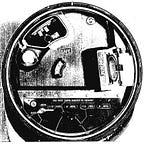Iranian Weapons Pour Into Embattled Tikrit
Tehran sends tanks, rocket launchers and drones
by ADAM RAWNSLEY
Iraqi and Shia militia forces have been taking back ground from Islamic State, pushing the jihadist fighters out of much of the town of Tikrit.
But in a sign of Tehran’s growing military presence in the Iraq, Iranian weapons were a nearly ubiquitous sight in images and videos coming out of the offensive to take the mostly Sunni city.
Ever since Islamic State shocked the region with its capture of Mosul last summer, Iran has opened up its arsenals and flooded clients, proxies and friends in Iraq with arms and vehicles.
Now, as Iraqi forces have brushed off their American advisers during the push into Tikrit, Iranian weapons — and advisers — are helping to spread the Islamic Republic’s influence.
Iranian officials are hesitant to acknowledge an obvious military presence in Iraq, but Tehran’s weapons supplies aren’t exactly discreet. The shipments include conspicuous heavy weapons peculiar to Iran or with obvious Iranian markings.
Despite the official denials, Iran clearly isn’t concerned about evidence of its involvement in the conflict being so easy to spot.
In August 2014, social media lit up with pictures purporting to show Iranian M-60 tanks crossing into Iraq from the border town of Khaneghein. Then in March, the open-source military blogger Oryx caught sight of an Iranian T-72S tank parading near the fighting in Tikrit.
Iran reportedly has up to 380 of the Shilden export variant of the T-72B tanks, which have explosive reactive armor.
Other heavy weapons making an appearance in Tikrit include an Iranian version of the BM-21 Grad multiple-launch rocket system, the Hadid. The Hadid, which fires 40 unguided rockets, is a product of Shahid Bagheri Industries, part of Iran’s Aerospace Industries Organization.
Whether through inattention or apathy — or perhaps quite deliberately — Tehran sent the Hadid to Tikrit with Iran’s crescents-and-sword national emblem still affixed to the rear.
But Safir trucks are by far the most visible indicator of Iran’s support. The tactical vehicles have been making an appearance in Iraq since the beginning of Iran’s push to oust Islamic State.
While Islamic State has to rely on commercial vehicles like Toyota pickup trucks to quickly move around, Iranian proxies in Iraq enjoy access to the purpose-built Safir.
The Safir is a 4 x 4 modeled after the iconic American M-38 and M-151 jeeps, which Iran claims to have put the into mass production by the thousands in 2007. Those numbers are hard to confirm, but judging by Shia militia propaganda, they’re certainly plentiful.
In the days before Iraqi forces finally cleared Tikrit of Islamic State fighters, social media imagery showed columns of Safirs clogging the roads on the way to the city.
The Safir can carry a handful of weapons systems. The most common is the 107-millimeter Fajr-1 rocket system, courtesy of Iran’s Defense Industries Organization.
The Fajr-1 is more or less a vehicle-mounted version of the popular Chinese Type 63 rocket, which have been around since the 1960s.
The 12 unguided rockets aren’t very accurate, but the militias used them in great numbers of pound Islamic State positions around the city.
U.S. officials told the New York Times that Iran sent drones toward Tikrit, and Iran’s state-owned Fars news agency claimed the unmanned vehicles were airborne over the city.
But whether Iranian or Iraqi forces operated those drones is increasingly difficult to say, as the aircraft have begun to appear with Iraqi flags on them.
We’d know more if any crashed in Islamic State territory. This has happened before, as the terror group has circulated photographs of the downed drones. But this hasn’t happened in Tikrit.
At the moment, Iraqi forces appear to have retaken most of the city. But with Islamic State still in control of significant swaths of Iraq, it’s unlikely the flood of Iranian weaponry will recede anytime soon.
